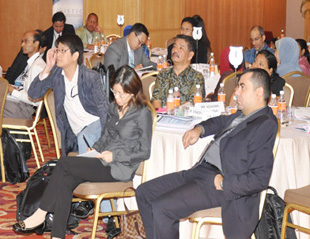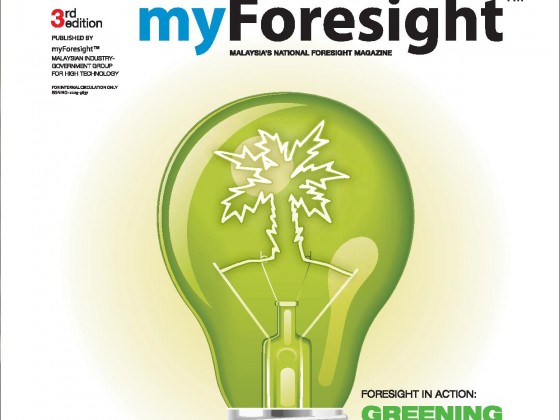by | Prof Emeritus Dato’ Dr. Zakri Abdul Hamid, Science Advisor to the Prime Minister of Malaysia /Joint Chairman – Government, MIGHT
Experience has shown that countries that grow rich are not necessarily those well-endowed with natural resources but those that invest wisely in building their human capital and allocating a reasonable percentage of their gross domestic product to research and development.
As we celebrate our 53rd Merdeka, it is also appropriate to reflect on what role science can play in building our national prosperity.
There used to be a time when science flourished in this country and contributed to wealth creation, although it was misdirected and catered to a different stakeholder. During the colonial era, several research institutions were established to enrich the British empire or to take care of the well-being of our then political masters.
The Institute of Medical Research was established in 1901 to address the hazards posed by tropical diseases prevailing at that time, malaria being one of them.
To meet the needs of an increasing population due partly to an influx of immigrant labourers, and to fill the coffers of the colonial government through export of agricultural produce, the Department of Agriculture was founded in 1905. To help exploit our abundant and pristine biological diversity at that time, especially the extraction of timber, the Forest Research Institute of Malaya was launched in 1926.
In one of the earliest episodes of bio-piracy, in 1876, Henry Wickham, an Englishman, smuggled 70,000 rubber seeds out of Brazil to be germinated at Kew Gardens near London, a despicable act but still deserving of a knighthood from Queen Victoria. Some of the seedlings were despatched to the Far East for large-scale planting.
To support the fledgling rubber industry, the Rubber Research Institute of Malaya (RRIM) was founded in 1926. The then Malaya and later Malaysia was the top rubber producing country in the world for many years, because of the excellent research and development conducted at RRIM. Rubber remained a top revenue earner for the country in the early years after Merdeka.
Oil palm, originally from West Africa, was first introduced to Malaya in 1910 by Scotsman William Sime and English banker Henry Darby. The first plantations were established by colonial owners such as Sime Darby. These companies were “Malaysianised” in the 1970s.
Science had a hand in creating wealth through oil palm cultivation. Research, which was earlier conducted by the plantation houses, received a boost with the establishment of the Palm Oil Research Institute of Malaysia (PORIM) in 1979. PORIM (renamed Malaysian Palm Oil Board in 2000) is a public-private-coordinated institution with an impressive rate of technology commercialisation at 30.6 per cent (compared with 3.4 per cent among local universities).
Time and circumstances have changed. Agro-based economic activities no longer constitute the bulk of our national prosperity. The export-oriented electrical and electronics industries located in the free trade zones brought a lot of revenue in the 1970s and 1980s but may not be tenable much longer, given the increasing competition from our cheaper-cost neighbours.
Petroleum is a major source of income but this source of wealth is finite. It is time to venture into other wealth-creating pursuits. The dawn of the 21st century has brought with it advances in information and communication technology and emerging technologies such as biotechnology, nanotechnology and the green technologies. However, these are all knowledge-intensive activities.
We need to prepare and equip our people well. Experience has shown that countries that grow rich are not necessarily those well-endowed with natural resources but those that invest wisely in building their human capital and allocating a reasonable percentage of their gross domestic product to research and development. Indeed, a 2007 World Bank Report suggested that “Malaysia needs an economy where science, technology and engineering are integrated into the production process and where creativity, imagination, knowledge and design capability are embodied in well-educated skilled workers who are the main source of national prosperity and wealth”.
Vision 2020 and the New Economic Model cannot be premised on low-cost, low-tech mass production but need to be driven by cutting-edge technologies underpinned by a strong R&D and innovation base.
We have embarked on that road. However, it has been a halting start. Notwithstanding that our policymakers are aware of the potential of science, technology and innovation in wealth creation, and national targets have been well set, these targets are somewhat off the mark for the moment.
There is an urgent need for a revamp of our science governance and research priority-setting. For example, although R&D spending of 1.5 per cent of gross domestic product was targeted in the Ninth Malaysia Plan, the gross expenditure on R&D in 2008 was a low 0.21 per cent, a dismal figure compared with the R&D spending of countries like Japan (3.32 per cent), South Korea (3.22 per cent) and Singapore (2.77 per cent).
Our efforts to increase the number of researchers to 50 per 10,000 workers were also not realised: the current figure stands at 20.3 per 10,000, compared with South Korea’s 89.8 and Singapore’s 103.
It is timely, therefore, as recently announced in the 10th Malaysia Plan, that the government intends to establish the National Science and Research Council, an apex body mandated to provide advice, set priorities and streamline R&D activities.
This is a strong signal to researchers in the public sector and partners in the corporate world that the government recognises the crucial role that science in general and R&D, in particular, play in building a prosperous and peaceful nation.
Let us work together to reignite the fire for a science renaissance in this country.
This article was published in The News Straits Times, 3 September 2010.









